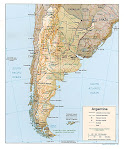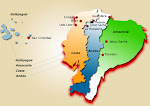Trying to get the measure of Tsuraku and the role of Jatun Sacha (and therein myself) here necessitates gathering some understanding of the series of socio-historical events that provide the context to the way the land and community has developed into this situation.
To save from inaccuracies in my interpretation of things, I have compiled a few extracts (geeky, moi?) from Jívaro [Shuar]: People of the sacred waterfalls, by Michael J. Harner (Berkley, Los Angeles, London; University of California Press, 1972, 1984):
“Only one tribe of American Indians is known to ever have successfully revolted against the entire of Spain, and to have thwarted all subsequent attempts by the Spaniards to conquer them.” (1)
“The Shuar also became [in the early 20th century] not just a warlike group, but as an individualistic people intensely jealous of their freedom and unwilling to be subservient to authority.” (1)
“The Shuar … long have had a practical understanding of the need to unite against a common external enemy in war. In the twentieth century, however, the gradually evolving threat did not fit the Shuar model of justification for war. Rather, missionaries and colonists trickled down from the Ecuadorian Andes and essentially infiltrated the Shuar population in the western or frontier region, gradually taking over lands formerly occupied by the Shuar.” (vii)
The Shuar eventually came to trade with the colonial settlers, clearing land for pasture for them in exchange for cloth and machetes. Then “cattle raising proved successful, and soon more colonists arrived. As their numbers increased and they were augmented by military and police units, their fear of the Shuar diminished, and they began seizing the Indians´garden clearings for pastures.” (32)
“The ´civilized´concept of killing people to defend land was alien to Shuar tradition, and they lacked and immediate cultural strategy to deal with the worsening situation.” (vii)
“[Around 1950] missionaries persuaded the government of Ecuador to set aside certain lands in the Upano Valley as church administered reservations for use by missionized Shuar.” (6)
"Finally, in the heart of the Río Upano Valley frontier area around Sucúa, where there was the greatest density of both Shuar and white colonists, as well as the catalyst of an activist Salesian priest, Juan Shutka, the protection of territory became a formerly recognised goal for Shuar survival in the early 1960´s. This recognition shortly let to the foundation of the Federation there in 1964, at this time named the Federacion Provincial de Centros Shuaros de Morana-Santiago.” (vii)
The Federation was funded by European religious organisations and other sources. “The funds supported not only the administrative activities of th Federation, but also the very important program to help the Shuar purchase cattle by extending credit. The clearing of forest and the raising of cattle have [in the 1980´s] become the primary economic activities of the Shuar. The success of their cattle industry has not only given them new self-confidence and ethnic pride, but also protects their claims to land since the creation of pastures prevents the government from appropriating it.” (10)
“Originally the Federation helped individual nuclear families acquire legal title to land, but surveying so many small tracts was difficult, and there was the danger that individuals would later sell their lands to the colonists from the highlands. Now the focus of Federation efforts is to obtain title to land by centros, with the families resident in a centro being allocated plots of land for their use, but not for their individual ownership.” (x)
“Meanwhile, the Shuar struggle to save their lands as white (mestizo) colonists continue to immigrate from the adjacent Ecuadorian highlands in ever increasing numbers. To make matters more difficult, often this colonization is sponsored by the Ecuadorian government [through resettlement programs]” (xii)
"Missionaries, with the backing of law enforcement agencies, were putting Shuar children in boarding schools and enculturing them to the new, alien way of life. this direct, unremitted contact was tending to acculturate the frontier Shuar to the national Ecuadorian way of life and the direction of the trend was towards eventual assimilation."
_______________________________________________
The road from puyo to Macas runs through the middle of Tsuraku (Pitirishka in Quichua). It is about 1 1/2 hours bus ride south of Puyo and north of Macas. The busses run regularly (about one every 45 minutes in either direction), and the driver honks his horn to let people know he is coming. the busses cost about $1 an hour, and let vendors on at the busier stops to sell apples, bananas, ice creams frozen in plastic bags, newspapers and sweets.
From the hand drawn map on the wall of the reserve house I count about 100 buildings, including outhouses, a school and college (named Collegio Tsansta, after a traditional Shuar practice worth googling), health clinic and basketball court. The buildings are made from either wood or breeze blocks, with tin or thatched roofs. There are a couple of examples of traditional Shuar buildings, but most people live in more ´modern´constructions.
Tsuraku was established in the 1960´s when a man called Moncayo settled here with his four wives. The community now consists of about 300 people, the majority of which are direct descendents of the original family and carry the Moncayo name. One of the original wives still lives. She looks to be in her seventies or eighties, and she wears a bright pink t-shirt and bright orange skirt, and outfit that makes me smile each time I see her.
The community is very close, both physically and socially, as footsteps and conversations can be heard from house to house. There are three shops of varying sizes, and sometimes we buy a beer and sit outside the shop to play cards. The Shuar tend to stay indoors in the evening, and so we tend to have the most contact with people in the daytime.
Jatun Sacha arrved in Tsuraku four years ago, and occupies both a privileged and precarious position. As Tsuraku is comminity-owned land, Jatun Sacha rents a house by agreement of the community. Anything that Jatun Sacha does here must be by agreement, which is I think is good considering the way do-gooders have seized control of the Shaur´s destinies in the past, but also means that things can take a long time, and that each project must prove its worth before the people embrace it and decide to collaborate.
One of the major aspects of Jatun Sacha´s work in Tsuraku is to encourage sustainable forestation practices. Cutting the forests for pasture or manufacturing is a rewarding prospect in the short term, but primary forests trees are 500 years old and so this is a severe threat to forest susinability. Jatun Sacha´s desired goal is to demonstrate and educate about sustainable practices. This is not easy, because a reforestation project for mahogany trees, for example, will not reap any results for a number of decades, and so the aim is to encourage people to appreciate the benefit their taking part will have on future generations; for their children and grandchildren.
An aspect of the reforestation project at Tsuraku is the establishment of viveros, or tree nurseries, to propagate enough mahogany plants so that in future years these trees can be sold as an alternative to cutting primary forest. Jatun Sacha has its own vivero, and would like to encourage people to establish them on their own lands. As these are long-sighted projects, and community members cannot be forced to recognise the benefits of having one, it is reassuring when a family does decide to put their land to this use.
Over the past weeks we have created a vivero behind the big tienda (the shop). We macheted clear an area about 500m sq, plotted out a number of beds, cut the trees to make the borders and fence posts, dug the soil and weeded it, sorted the seeds and planted them. Just over a month ago it was an overgrown wasteland, and now it is a working piece of land with fresh green seedlings peeping above the soil.
In thirty years time the little boy who lives in the tienda might be cutting these trees.
It´s funny. I´ve found it really dificult to describe the details of what I have actually been doing here. There have been quite a few times when I have felt really disheartened that we aren´t really doing very much, and many times that has been exactly the case as work can often be cancelled due to heavy rains or suchlike. There have been moments where I have wondered whether we are having any good impact on the environment or community by being here, as the work is so piecemeal and the effects are obscure.
But just now, thinking about the little boy in the tienda being a grown man and possibly cutting a tree that we planted, I feel quite positive about being here. I certainly don´t think that we can be having a negative impact. The project is young like the saplings, but something grand may come of it yet.
I will be leaving Tsuraku next week.
Subscribe to:
Post Comments (Atom)



No comments:
Post a Comment